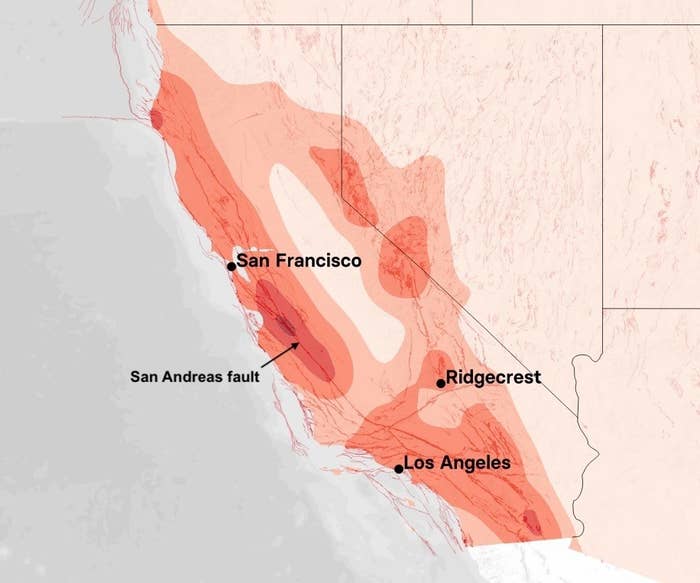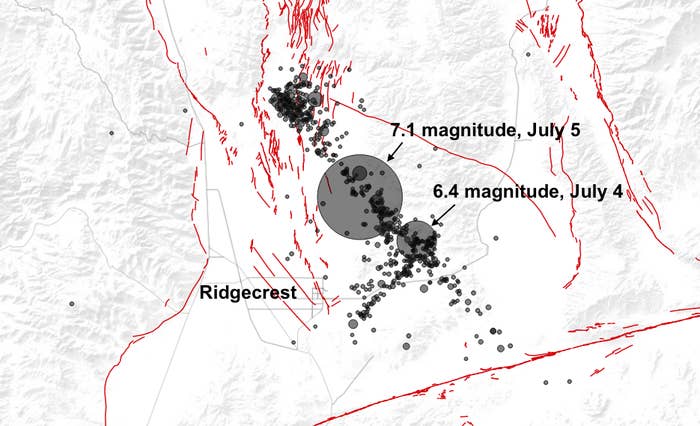
After two damaging quakes in as many days, Californians are wondering whether the feared “Big One” has become more or less likely.
Seismologists say that the city of Ridgecrest, near the epicenter of both quakes, may be in for more aftershocks — with a small chance of an even bigger quake to come.
But that won't affect whether or not a long-feared earthquake of up to magnitude 8 could occur along the San Andreas Fault, which hits the California coast near San Francisco and then runs down the state, passing to the east of Los Angeles.
In general, one quake makes another more likely — but only on connected fault systems. The quakes near Ridgecrest happened on a system of relatively small faults in Kern County, just over 100 miles east of Bakersfield.

The map above shows that the two quakes and the swarm of associated aftershocks have ruptured two faults intersecting each other at a 90-degree angle.
“It does look like we might be seeing two different faults,” seismologist Lucy Jones of Caltech told a press conference Friday. The July 4 quake, a magnitude-6.4 tremor that struck at 10:33 a.m. local time, also happened at the intersection of the two.
“This is an area with a lot of little faults,” she added.
After Thursday's quake, Jones and other seismologists warned of aftershocks. Jones said it was likely there would be at least one larger than magnitude 5 within the next day.
But the July 4 quake turned out to be a foreshock for the magnitude-7.1 tremor that hit at 8:20 p.m. Friday, a few miles to the northwest. It was followed by yet more aftershocks.
Late Friday night, Jones tweeted that there was a 10% chance of yet another magnitude-7 quake.
Yes, we estimate that there's about a 1 in 10 chance that Searles Valley will see another M7. That is a 9 in 10 chance that tonight's M7.1 was the largest.
But the faults that have damaged buildings and fractured gas mains in Ridgecrest aren’t connected to the San Andreas or other big concerns like the Hayward Fault, which runs parallel to it down the east side of the San Francisco Bay.
Pundits sometimes say that a big quake in Southern California is “overdue.” But in fact, there’s no way to predict the timing of quakes, and they don’t obey any schedule.
The last really big quake in Southern California was a magnitude-7.9 in 1857. An earthquake of this size would cause 6.3 times as much shaking as Friday’s magnitude-7.1, and release more than 15 times as much energy.
CORRECTION
The second map has been updated to reflect the difference in the amount of shaking caused by the two large earthquakes. In an earlier version of this post they were not scaled correctly by this measure.
